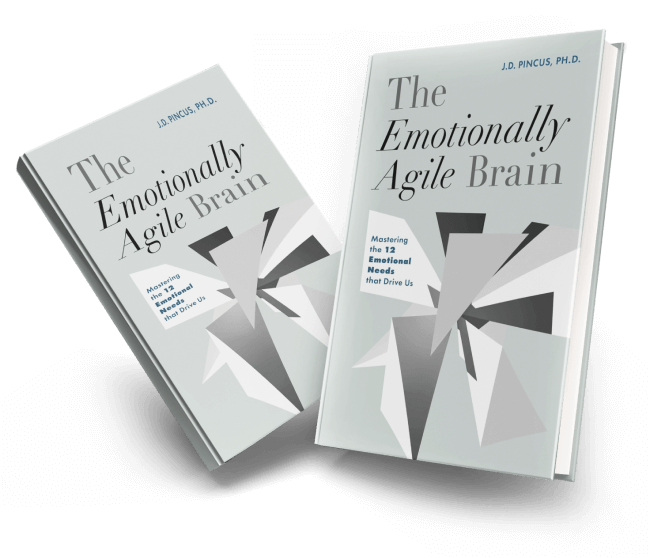Understanding Leadership in Today’s Complex World
Leadership today is more essential than ever—and more challenging. As organizations navigate unprecedented complexity, change, and disruption, effective leadership has become a cornerstone of success. As an indication of its prominence, leadership development is the single largest human resources expenditure ($356 billion in 2015) outside of salary and benefits (Beer et al., 2016), yet many organizations still struggle with disengagement and a lack of confidence in their leadership ranks (Segal, 2021). Indeed, a recent survey found that only 11 percent of companies rate themselves as having a strong leadership team, the lowest rating in a decade.
What lies at the heart of this gap? One answer is the overwhelming proliferation of leadership models, styles, and traits. Leadership theory has splintered into dozens of overlapping paradigms: transactional vs. transformational, ethical vs. servant leadership, visionary vs. democratic—each emphasizing different traits or behaviors without a unifying framework. As one academic management expert put it, the proliferation of disconnected taxonomies of leadership behavior is “bewildering.”
For example, transformational leaders inspire change through vision and charisma, while transactional leaders focus on rewards and clear expectations. Servant leaders prioritize the growth and well-being of their teams, often putting others’ needs above their own. Visionary leaders articulate a compelling future, whereas democratic leaders emphasize shared decision-making and consensus. Then there are coaching leaders, who nurture talent and development, and pacesetting leaders, who drive high performance by setting a fast pace—sometimes at the cost of team morale.
Listen to the Podcast
| Adaptive | Democratic | Intellectual | Resonant |
| Agile | Developmental | Laissez-faire | Results-Based |
| Authentic | Distributed | Moral | Servant |
| Autocratic | Emergent | Narcissistic | Situational |
| Bureaucratic | Entrepreneurial | Participative | Strategic |
| Change | Ethical | Paternalistic | Task-Oriented |
| Charismatic | Holistic | People-Oriented | Transactional |
| Coaching | Influential | Pragmatic | Transformational |
| Collaborative | Innovative | Quiet | Versatile |
| Cultural | Inspirational | Relational | Visionary |
While each style offers valuable insights, they often overlap or conflict, making it hard for leaders to know when and how to apply them effectively. Coining new terms may be helpful for those looking to sell books or deliver TED talks, but this tendency (in both academia and business) to “pour old wine into new bottles” merely creates conceptual chaos. And by failing to integrate new concepts with existing concepts, such “innovations” are intellectually dishonest in their claims that “really, it all boils down to (insert new concept here).” The reality of management is complicated enough; this unnecessary complexity points to the need for a unified model of leadership that is grounded in first principles.
This article explores how AgileBrain’s needs-based emotional framework offers that unifying theory, grounding leadership in the emotional needs of followers and positioning emotional insight as the cornerstone of leadership effectiveness.
Leadership Styles: The Fragmentation Challenge for Maya
Imagine a department director named Maya, managing a cross-functional team during a period of rapid organizational change. She’s a thoughtful and ambitious leader who has read several books and attended multiple leadership development programs over the past few years. Each workshop she attended emphasized a different leadership model—one celebrated servant leadership, another promoted the transformational model, and her executive coach has recently recommended adopting more of a coaching style to her leadership.
On Monday, Maya tries to be a servant leader—she prioritizes team wellbeing and steps back to let the group take the lead on project planning. By Wednesday, the project seems at risk of falling behind schedule, so she shifts gears into pacesetting mode, taking charge and pushing the team to meet tighter deadlines. On Friday, her supervisor reminds her about a stakeholder report, and she pivots again—this time trying a commanding style to drive quick decision-making.
By the end of the week, Maya is exhausted—and so is her team. They’re confused by the sudden shifts in leadership approach. Some feel unsupported, others feel micromanaged, and a few wonder if Maya even has a consistent leadership philosophy. Despite her good intentions and training, Maya’s leadership feels reactive and disjointed.
This scenario illustrates the fragmentation challenge leaders face today. With so many competing styles and frameworks, it becomes hard to know what to use when, and why. What’s missing is an underlying structure to help Maya understand what drives her leadership choices—and how to tune them to the emotional needs of her team.
The AgileBrain Framework: Human Needs at the Core
AgileBrain addresses this issue with a comprehensive model that grounds leadership in the psychological needs of followers. Based on Dr. Pincus’ Unified Pyramid of Human Motivation, this model categorizes emotional needs into 12 core motivations across four life domains (Self, Material, Social, Spiritual) and three levels of striving (Foundational, Experiential, Aspirational).
Each need operates in a Promotion mode (wanting more of the good) or Prevention mode (wanting less of the bad). Here’s a breakdown of the 12 emotional needs in the AgileBrain Framework and examples of how each plays out in leadership:
Each of these needs can be a source of strength or distortion in leadership. For example, strong Promotion-Potential without grounded Purpose can result in overextension; high Prevention-Scorn without enough Safety can lead to micromanagement.
As anyone who has managed a team knows, the only constant is change. Understanding and balancing changing emotional needs allows leaders to cultivate a leadership style that is adaptive as situations evolve.
Why Emotional Needs Matter in Leadership
Leadership is a relational act—it lives in the space between people. Effective leadership fosters trust, inclusion, growth, and a shared sense of purpose. Ineffective leadership, conversely, leaves needs unmet, contributing to disengagement, conflict, or even toxic culture.
By understanding their own emotional needs and those of their teams, leaders can:
- Emphasize the most appropriate leadership style for the particular context: the time, place, people, and situation.
- Understand why certain behaviors inspire or alienate.
- Create inclusive, psychologically safe, and highly productive environments.
Leaders operate from their own motivational defaults that reflect inherent tradeoffs in the framework: the focus on one’s own needs vs. those of others, and the focus on principle vs. practicality. A leader high in promotional Recognition needs may constantly seek visibility and accolades, potentially coming across as self-promoting. A leader high in the need to avoid Injustice may overfocus on avoiding unfairness, possibly leading to rigidity. Awareness of these biases is critical.
Maya’s Transformation: Leadership Aligned with Emotional Insight
After struggling with switching between leadership styles and feeling disconnected from her team, Maya’s executive coach suggested she take the AgileBrain exercise—and encouraged her team to do the same. Her results revealed strong Promotion needs for greater Purpose and Autonomy, alongside a high need to avoid Scorn. This explained why she often felt pressure to perform flawlessly and avoided tough conversations for fear of being disliked.
When she reviewed her team’s collective insights, she noticed a trend: many team members had high needs for Inclusion, Caring, and Recognition. They weren’t looking for fast decisions or directive leadership—they were craving emotional presence, a sense of belonging, and acknowledgment for their contributions.
This discovery changed everything.
Maya paused her impulse to jump between leadership models and began leading from her authentic core: aligning with her deep desire for purpose-driven work while being mindful not to let fear of criticism mute her voice. She started sharing more openly about why their work mattered, tying tasks to the bigger vision. And she became more intentional about affirming her team—offering shout-outs during meetings and creating space for each person’s voice to be heard.
Over time, her team’s morale improved. They felt seen, supported, and inspired. Maya felt more grounded, no longer bouncing between styles but leading with emotional clarity.
Her leadership wasn’t a performance—it was a relationship. And it started with emotional insight.
Step-by-Step: Using AgileBrain to Improve Leadership
Identify Your Emotional Drivers
Complete an AgileBrain exercise to uncover your personal profile of emotional needs, including:
- Which needs are strongest for you
- Whether those needs are expressed as wanting more of the good (Promotion) or less of the bad (Prevention)
This insight allows leaders to see where their energy is going—toward achievement, validation, safety, connection, purpose, or something else.
Reflect on How These Needs Shape Your Leadership
Ask yourself:
- How do my top needs influence the way I lead?
- Do I tend to overcompensate for unmet needs?
- How might others perceive my behavior based on these needs?
A leader with strong need to avoid Scorn may avoid giving feedback for fear of being disliked, even when the team needs direction.
Consider the Emotional Needs of Your Team
Using coaching conversations and AgileBrain exercises, identify what drives your team members. Are they seeking:
- More autonomy or less micromanagement?
- More inclusion or less exclusion?
- More recognition or less invisibility?
Great leaders adapt to fulfill the unmet needs of their followers, not impose their own needs onto others.
Adjust Leadership Behaviors to Meet Needs
Once you’ve mapped your team’s needs:
- Provide clear structure and safety for those driven by Security.
- Offer public praise and affirmations for those motivated by Recognition.
- Encourage ethical discussions for those driven by Ethics and Purpose.
These are a tiny sampling of the possible ways to address the needs of team members. This intentional behavior closes the gap between leadership actions and emotional resonance.
Monitor, Learn, and Iterate
Leadership is dynamic. Emotional needs shift over time and across contexts. Make needs-checking a regular part of your leadership practice:
- Include emotional needs check-ins in 1:1s.
- Revisit your own AgileBrain profile regularly.
- Use team surveys or pulse checks to assess group needs.
Final Thoughts: Leadership as Emotional Alignment
Leadership is not about mastering dozens of isolated traits or adopting styles. It is about aligning leadership behaviors with the emotional needs of followers.
But more than that, effective leadership begins with understanding yourself. As a leader, your needs—your desires for Recognition, Autonomy, Purpose, or Safety for example—shape how you show up for others. When your own emotional needs go unmet, it becomes harder to support the needs of your team. The result is often burnout, frustration, or disconnection.
By becoming aware of your own emotional needs through AgileBrain, you gain the clarity to lead from a place of honesty. You begin to recognize why certain leadership styles resonate with you, and how your emotions might unintentionally impact those around you.
Likewise, when you tune in to the emotional needs of your team, you build bridges of trust and connection. You don’t just manage performance—you foster belonging, resilience, and growth. That’s where real leadership lives: in the everyday moments where someone feels seen, safe, and supported.
Great leadership isn’t about being everything to everyone—it’s about being grounded in who you are and being present to others’ needs. When both the leader and the team feel emotionally aligned and valued, collaboration thrives, innovation grows, and purpose deepens.
So, if you’re striving to become a better leader, start by asking: What am I truly needing right now? And what might those around me be needing, too?
The most enduring leadership is not performed—it’s felt.




